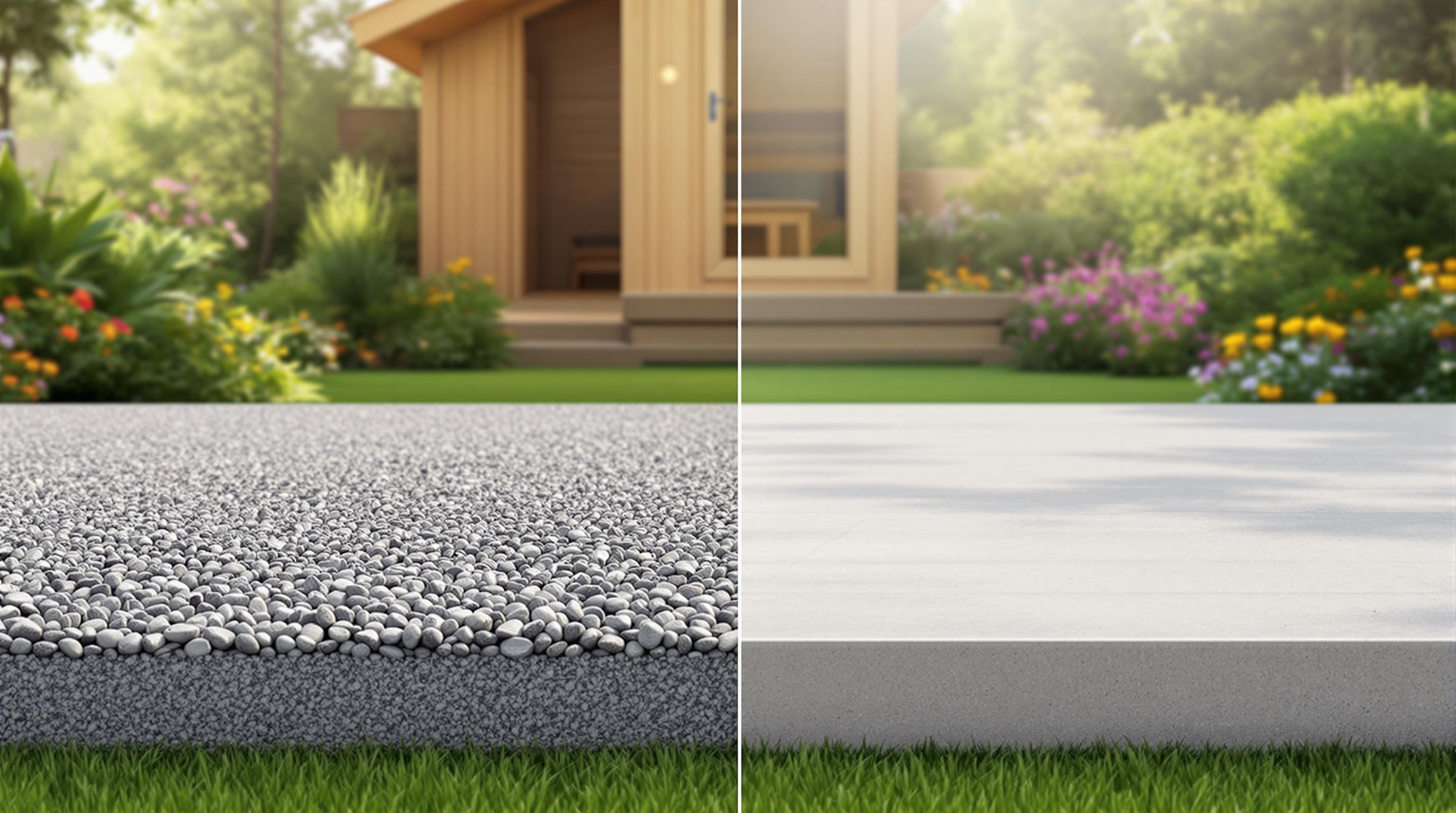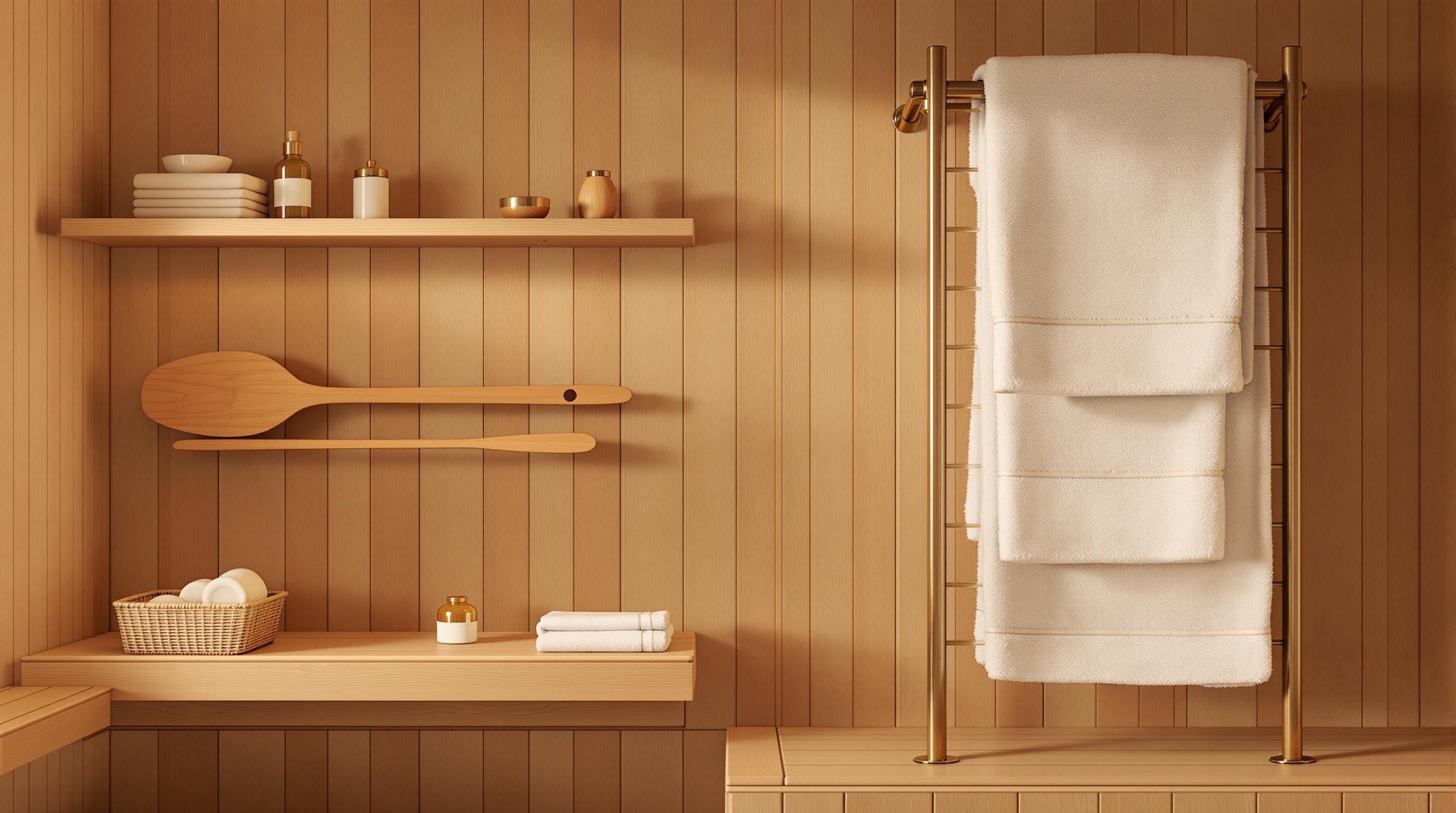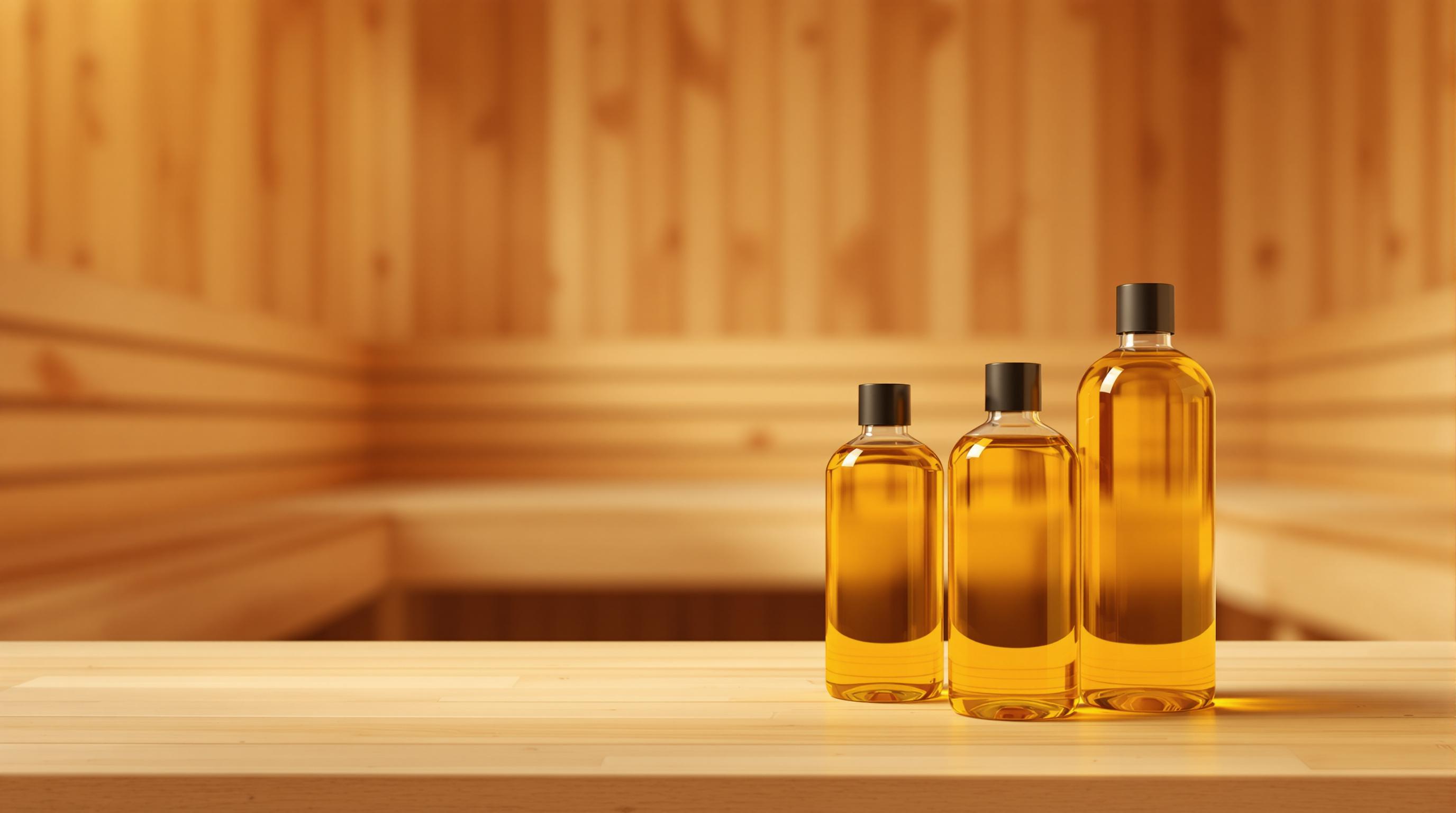Ceiling height is crucial for sauna heat efficiency. A 7-foot ceiling retains heat better than an 8-foot ceiling, improving temperature consistency by up to 20°F. The ideal range is 7 to 8 feet, ensuring even heat distribution, lower energy use, and user comfort.
Key Points:
- 7 feet: Best heat concentration and energy efficiency.
- 7.5 feet: Balanced heat and efficiency.
- 8 feet: Moderate efficiency with some heat stratification.
- Lower ceilings reduce air volume to heat, saving energy.
- Place the upper bench 44 inches below the ceiling for optimal heat exposure.
Choosing the right ceiling height, bench placement, and stove size ensures a comfortable and efficient sauna experience.
How to Build Perfect Sauna Ceiling
Ceiling Height and Its Effect on Heat Distribution and Efficiency
The height of a sauna’s ceiling plays a key role in how heat is distributed and how efficiently energy is used. This is mainly due to two factors: heat stratification and the total air volume in the space. According to a Finlandia Sauna study, an 8-foot ceiling can result in a 20-degree temperature difference between the upper bench and head level compared to a 7-foot ceiling [1].
Heat Stratification and Air Flow
Heat tends to form layers, with hotter air rising to the top. This stratification impacts how comfortable and efficient a sauna feels. To maintain a good balance, experts suggest keeping a 44-inch gap between the ceiling and the upper bench [3]. Finnish specialists recommend ceiling heights between 7 and 8 feet to promote even heat distribution, effective ventilation, and a pleasant sauna experience [2].
Ceilings lower than 7 feet are great for concentrating heat, but anything taller than 8 feet can lead to uneven heating. In saunas with higher ceilings, the upper part can become excessively hot while the lower areas stay cooler, reducing overall efficiency [2].
Energy Use and Ceiling Height
Ceiling height directly impacts energy consumption. Lower ceilings reduce the amount of air that needs to be heated, making the sauna more energy-efficient. This is why the 7- to 8-foot range is often recommended.
"Finnish experts emphasize the importance of optimal ceiling heights for efficient heat distribution and proper ventilation. They recommend ceiling heights between 7 to 8 feet to ensure a comfortable and enjoyable sauna experience." [3]
The height of the stove also matters. Taller stoves may require higher ceilings to ensure safe and effective operation [3]. Following these guidelines for ceiling height can significantly improve both heat distribution and energy use in your sauna.
Recommended Ceiling Heights for Saunas
Standard Ceiling Height Recommendations
Lowering a sauna ceiling from 8 feet to 7 feet can improve temperature consistency by about 20 degrees at seating level [1]. This adjustment strikes a great balance between heat efficiency and user comfort.
Here's a quick look at how ceiling height affects heat distribution and energy use:
| Ceiling Height | Heat Distribution | Energy Efficiency |
|---|---|---|
| 7 feet | Best heat concentration | Most efficient |
| 7.5 feet | Balanced | Very efficient |
| 8 feet | Some heat stratification | Moderately efficient |
These guidelines work well for most saunas, but larger or custom designs might need some tweaks to maintain efficiency.
Ceiling Heights for Larger or Custom Saunas
For custom saunas, factors like floor space, stove size, ventilation, and how many users it accommodates play a role in determining the ceiling height. Larger saunas can handle slightly higher ceilings, though sticking to the 7-8 foot range usually ensures good heat distribution [2].
If you're using taller stoves, such as the Kuuma model, higher ceilings might be necessary to follow the law of löyly. This Finnish design principle focuses on achieving the best heat circulation and comfort [3]. It's a smart idea to work with a professional when dealing with specialized setups to ensure everything runs efficiently.
sbb-itb-3953eb0
Design Factors for Sauna Efficiency
Ceiling height is essential for sauna performance, but other factors like bench and stove placement are just as important for maintaining efficient heat distribution.
Bench Heights and Ceiling
The positioning of benches in relation to the ceiling is a key element in sauna design. Finnish sauna specialists suggest placing the upper bench 44 inches below the ceiling for the best heat exposure [3]. This distance allows bathers to experience the most intense heat while ensuring proper airflow.
Middle and lower benches should be set at 24-30 inches and 12-18 inches from the floor, respectively. This setup provides different heat levels, catering to individual preferences.
While benches determine how heat is experienced, the placement of the stove is crucial for distributing that heat evenly.
Stove Placement and Size Effects
The location and size of the stove can make or break a sauna's heat efficiency. A well-placed stove ensures heat is evenly spread across the room. For saunas with lower ceilings, the stove should be positioned to minimize heat layering at the top. Taller ceilings, on the other hand, may require taller stoves to circulate heat effectively.
"A 7-foot ceiling means a trip to the penalty box for breaching the law of löyly" - SaunaTimes [3]
The stove should be positioned to encourage natural convection, allowing heat to flow smoothly throughout the space. It’s also important to match the stove’s size to the sauna’s dimensions to maximize energy efficiency and maintain consistent heat levels [2].
Find the Home Sauna of Your Dreams

Top Home Sauna makes it easy to find a sauna designed for comfort and efficiency. Their product descriptions detail how each model is built to maximize heat distribution and energy use, covering key elements like bench and stove placement.
The platform offers a variety of sauna types, including traditional Finnish saunas and infrared options. Each listing provides in-depth specifications, such as ceiling heights and heat distribution systems, ensuring you have all the details to choose the perfect model. For example, if you're considering a traditional Finnish sauna, you'll find models with the recommended 7-foot ceiling and other features that enhance heat efficiency.
Conclusion: Efficient and Comfortable Sauna Design
A 7-foot ceiling is ideal for concentrating heat and reducing energy use, as studies highlight noticeable temperature benefits compared to taller ceilings [1]. This design choice directly affects both comfort and operational expenses.
Placing the upper bench 44 inches below the ceiling ensures proper heat exposure and airflow, following the Finnish 'law of löyly' [3]. This arrangement promotes even heat distribution while keeping energy use in check.
The choice and placement of the stove are equally important. For instance, models like the Kuuma stove require specific ceiling clearances to maintain safety and functionality, making careful planning essential for a great sauna experience [3].
Creating an efficient sauna involves paying attention to details like ceiling height, bench placement, and stove positioning. A ceiling height between 7 and 8 feet, combined with proper ventilation, sets the stage for both effective performance and maximum comfort [2].
"Finnish experts emphasize that a ceiling height of 7 to 8 feet provides optimal heat distribution and ventilation, while considering factors like stove placement and personal preference when designing for efficiency and comfort." [2][3]


